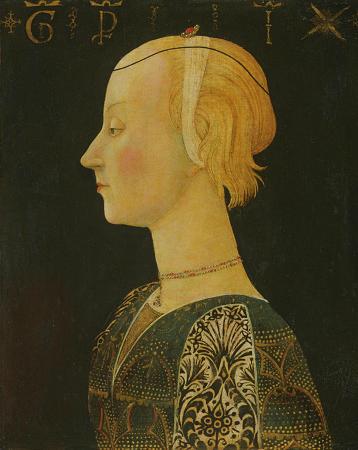Masaccio (1401 - 1428). Masaccio, born Tommaso di Ser Giovanni di Simone, was a Florentine artist who is regarded as the first great Italian painter of the Quattrocento period of the Italian Renaissance. According to Vasari, Masaccio was the best painter of his generation because of his skill at imitating nature, recreating lifelike figures and movements as well as a convincing sense of three-dimensionality. He employed nudes and foreshortenings in his figures. This had seldom been done before him. The name Masaccio is a humorous version of Maso, meaning clumsy or messy Tom. The name may have been created to distinguish him from his principal collaborator, also called Maso, who came to be known as Masolino. Despite his brief career, he had a profound influence on other artists and is considered to have started the Early Italian Renaissance in painting with his works in the mid-and late-1420s. He was one of the first to use linear perspective in his painting, employing techniques such as vanishing point in art for the first time. He moved away from the International Gothic style and elaborate ornamentation of artists like Gentile da Fabriano to a more naturalistic mode that employed perspective and chiaroscuro for greater realism. Masaccio died at the age of twenty-six and little is known about the exact circumstances of his death. Upon hearing of Masaccio's death, Filippo Brunelleschi said: We have suffered a great loss. Masaccio was born to Giovanni di Simone Cassai and Jacopa di Martinozzo in Castel San Giovanni di Altura, now San Giovanni Valdarno. His father was a notary and his mother the daughter of an innkeeper of Barberino di Mugello, a town a few miles north of Florence. His family name, Cassai, comes from the trade of his paternal grandfather Simone and granduncle Lorenzo, who were carpenters/cabinet makers. Masaccio's father died in 1406, when he was only five; later that same year a brother was born, named Giovanni after his father. He also was to become a painter, with the nickname of lo Scheggia meaning the splinter. In 1412 Monna Jacopa married an elderly apothecary, Tedesco di maestro Feo, who already had several daughters, one of whom grew up to marry the only other documented painter from Castel San Giovanni, Mariotto di Cristofano.There is no evidence for Masaccio's artistic education, however Renaissance painters traditionally began an apprenticeship with an established master around the age of 12. Masaccio would likely have had to move to Florence to receive his training, but he was not documented in the city until he joined the painters guild as an independent master on January 7, 1422, signing as Masus S. Johannis Simonis pictor populi S. Nicholae de Florentia. The first works attributed to Masaccio are the San Giovenale Triptych, now in the Museum of Cascia di Reggello near Florence, and the Virgin and Child with Saint Anne at the Uffizi. The San Giovenale altarpiece was discovered in 1961 in the church of San Giovenale at Cascia di Reggello, very close to Masaccio's hometown. It depicts the Virgin and Child with angels in the central panel, Sts. Bartholomew and Blaise on the left panel, and Sts. Juvenal and Anthony Abbot in the right panel. The painting has lost much of its original framing, and its surface is badly abraded. Nevertheless, Masaccio's concern to suggest three-dimensionality through volumetric figures and foreshortened forms is apparent, and stands as a revival of Giotto's approach, rather than a continuation of contemporary trends. The second work was perhaps Masaccio's first collaboration with the older and already-renowned artist, Masolino da Panicale. The circumstances of the two artists' collaboration are unclear; since Masolino was considerably older, it seems likely that he brought Masaccio under his wing, but the division of hands in the Virgin and Child with Saint Anne is so marked that it is hard to see the older artist as the controlling figure in this commission. Masolino is believed to have painted the figure of St. Anne and the angels that hold the cloth of honor behind her, while Masaccio painted the more important Virgin and Child on their throne. Masolino's figures are delicate, graceful and somewhat flat, while Masaccio's are solid and hefty. In Florence, Masaccio could study the works of Giotto and become friends with Brunelleschi and Donatello. According to Vasari, at their prompting in 1423 Masaccio travelled to Rome with Masolino: from that point he was freed of all Gothic and Byzantine influence, as seen in his altarpiece for the Carmelite Church in Pisa.
more...













